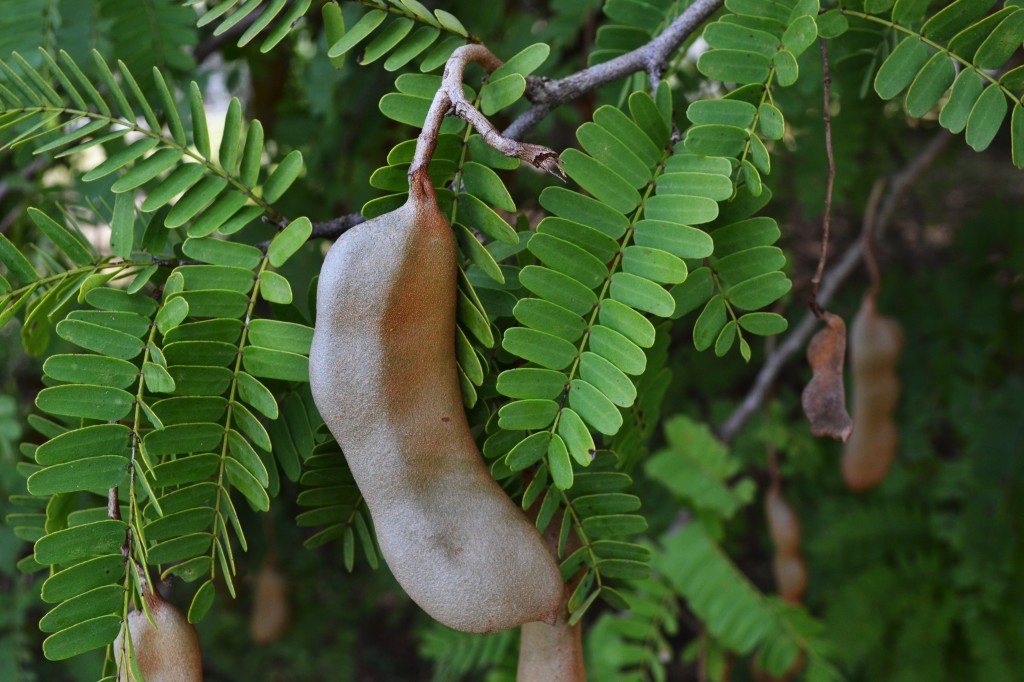Tamarind
Tamarindus indica
Plant Family: Leguminosae
Leaves: Alternate, once-compound, with 10 – 16 pairs of oblong leaflets; the leaves are held on zigzag branches.
Bark: Medium to dark gray, lightly fissured.
Flowers: Yellow, pea-like, the petals show red streaks; late summer to fall.
Fruits: A green pod that turns brown, to 10 cm long, the pulp that surrounds the seeds is edible; fall to winter.
Habitat: Typically found along the coast as an escape from cultivation. It is long-lived and its presence often indicates the site of former homesteads, where it was planted for shade and its fruits.
Growth Form: Medium-sized to large tree.
Similar Species: The lightly fissured trunk and characteristic zigzag branches distinguish it from other legumes.
Comments: This non-native species originated in Africa but has been introduced to tropical countries worldwide, especially India, which explains the specific name. Tamarind has many culinary and medicinal uses and is considered one of the most useful plants to human societies.

